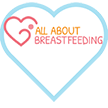The latest stats from the Surgeon General of the United States show that fewer than 1 in 6 mothers are exclusively breastfeeding their babies at the end of six months. This is disheartening news especially when all the health organizations are recommending exclusive breastfeeding for the first 6 months for all babies. Given that recommendation, 1 in 6 is just way too low.
Why? Simply stated – there are many barriers that mothers encounter when it comes to successful breastfeeding. Watch this video to learn more about workplace barriers.
Read about some of the barriers and think about what you might be able to do to improve the rates.
American Academy of Pediatrics and The World Health Organization have something to say about breastfeeding.
A CALL TO ACTION ON BREASTFEEDING
Children should have the best, healthiest start to life. The American Academy of Pediatrics recommends exclusive breastfeeding for the first six months and continued breastfeeding for at least the first year of a child’s life. Studies show that any amount of breastfeeding, though, is beneficial and results in greater protection from illness, a reduced incidence of obesity as well as many other benefits for baby—and mother, too—including a reduction in baby’s risk of SIDS and mother’s postpartum depression.[1] Yet, according to the Surgeon General of the United States fewer than one in six mothers are exclusively breastfeeding their babies at the end of six months.[2]
The Centers for Disease Control and Prevention found significant disparities by race and ethnicity when it analyzed 2004 to 2008 National Immunization Survey breastfeeding data for children born between 2003 and 2006 (see Table 1).[3] The data show that non-Hispanic black women are less likely than other women to initiate and continue to breastfeed.

The data also find variation by participation in the WIC supplemental nutrition program by mother’s age, marital status and level of education.
In addition to a lack of supportive services in certain communities, there seems to be some evidence that black women are more comfortable with formula feeding. Whether the barriers are structural or cultural, more intervention efforts and education are needed to help close these gaps.
Workplace Barriers
Upwards of one half of all women with children younger than one year are working outside the home. To ensure that these mothers can work to support their families and also breastfeed, workplaces must be baby-friendly. The Affordable Care Act requires most employers to provide unpaid time for a mother to express milk and a private and clean space to do so. The Surgeon General and the International Labor Organization both report that American women have less support to breastfeed than women in many countries. In 2009, only 15 American states required employers to support breastfeeding women upon their return to work.
Voices for America’s Children calls on policymakers, public health officials at all levels of government, and the broader public to support efforts to increase the incidence of breastfeeding among women.
Benefits for Baby & Mother
- Lower incidence of certain viruses
- Lower incidence of respiratory illness
- Reduction in ear infections, meningitis
- National Institute of Environmental and Health Sciences found that breastfed children have a 20 percent lower risk of dying between the ages of 28 days and 1 year
- The immune factors in breast milk guard against invading germs and result in a natural buildup in babies of protections against many forms of illness
- Breastfeeding may protect babies from developing allergies
- Research has demonstrated a connection between breastfeeding and cognitive development (greater intelligence)
- Recent studies show a strong link between breastfeeding and a lower incidence of obesity as a teen or adult.
- The longer women breastfeed, the greater the mother’s protection against breast and ovarian cancers.
Removing the Impediments to Breastfeeding
- Give mothers the support needed to breastfeed
- Educate fathers and other family members
- Communities can strengthen programs for mother-to-mother supports and peer counseling
- Local organizations can promote and support breastfeeding
- National organizations can promote breastfeeding awareness and help to remove barriers
- Marketing of infant formula should be done in a way that reduces negative impacts on breastfeeding
- Hospitals should be incentivized to establish breastfeeding from birth education and support programs and to reject financial incentives from the formula manufacturers
Policy Recommendations
- Maternity care policies should be fully supportive of breastfeeding
- Education and training for all health care professionals
- Support for breastfeeding should be established as a standard of care for health professionals
- Remove obstacles that limit greater availability and safety of banked donor milk
- Paid maternity leave for all employed mothers for at least the first six months to encourage exclusive breastfeeding
- All employers should provide support to lactating mothers and private facilities for mothers to have access to their babies.
- Increased resources for additional research on breastfeeding benefits and to track breastfeeding rates
- Provide federal resources for state and local health departments to develop expertise and monitor breastfeeding in their jurisdictions
- Provide federal and state funding to all breastfeeding coalitions established by the U.S. Breastfeeding Committee, including local, tribal, and territorial coalitions
- National leaders should strongly promote and support breastfeeding
For further information, www.voices.org.
[1] Babycenter.com. How Breastfeeding Protects You and Your Baby. July 2010
[2] U.S. Department of Health and Human Services. The Surgeon General’s Call to Action to Support Breastfeeding. Washington, D.C. January 20, 2011.
[3] Centers for Disease Control and Prevention. Washington, D.C. Racial and Ethnic Differences in Breastfeeding Initiation and Duration, by State—National Immunization Survey, United States, 2004-2008. March 26, 2010. (some variation by state and region are clear from the data; national averages are reported here)
